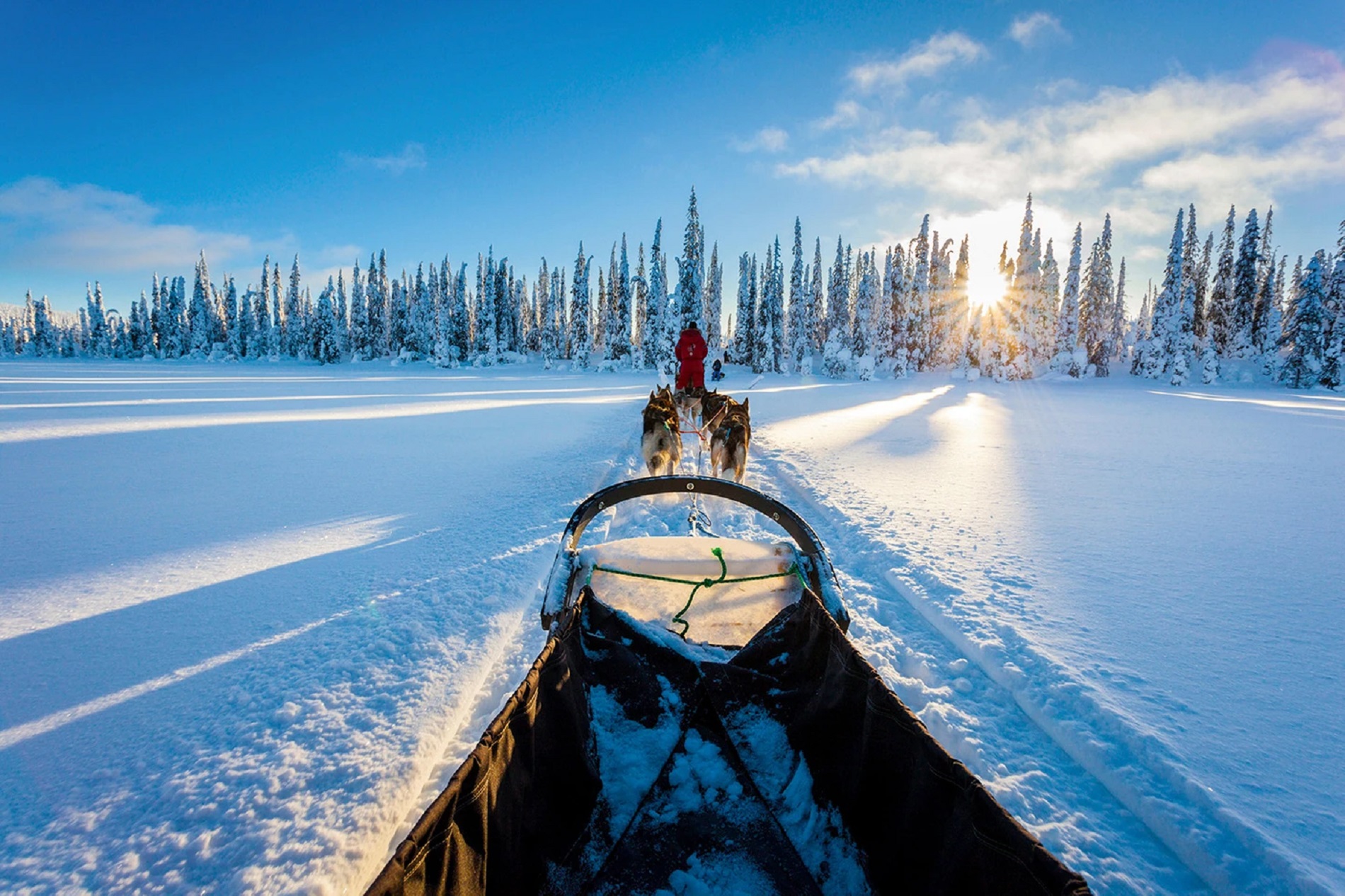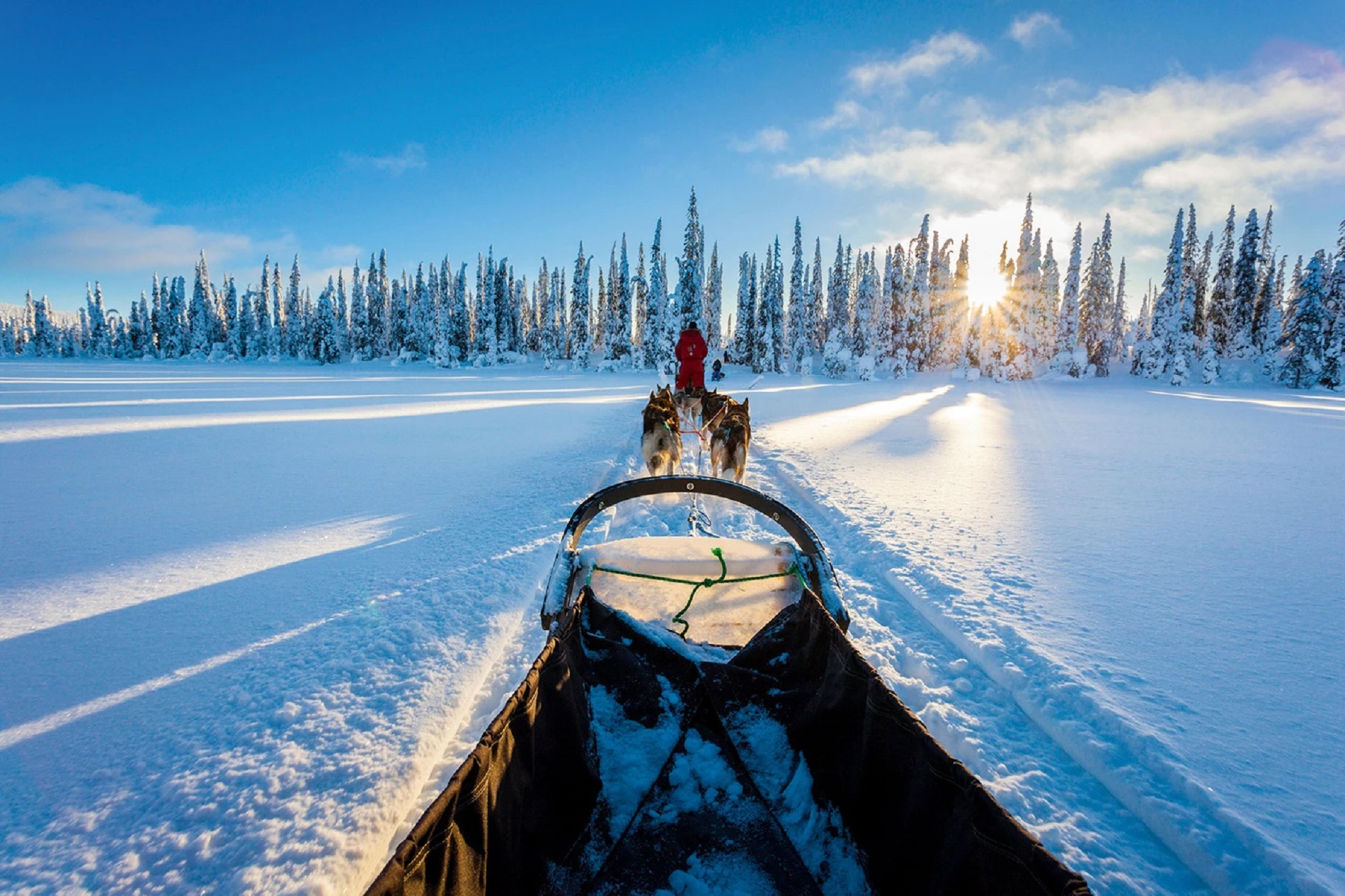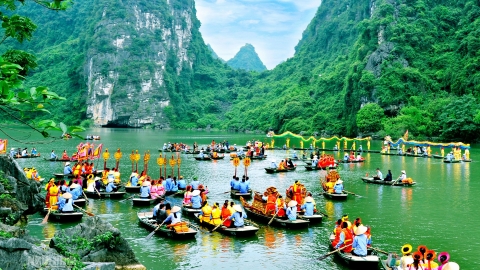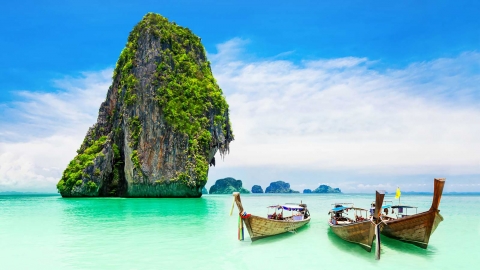In the Arctic regions, winter is long and extremely harsh, temperatures drop below 0 degrees Celsius, snow covers the roads, pine forests far away. Ice and snow not only paint poetic pictures but also attract explorers around the world with many unique experiences. Below are some of the most famous activities.
Sleep in an ice hotel on a mountain in Romania

The hotel is located in the Fagaras Mountains, about 300km northwest of Bucharest, Romania, with temperatures ranging from -2 to 2 degrees Celsius. Photo: Shutterstock
In winter, Lake Balea in Transylvania freezes into a Hotel. From December to April, visitors to Romania experience drinking beer, enjoying food in sub-zero air and lying on cool ice beds.
Visitors can also hike on the snowy slopes, hike the frozen Balea waterfalls and ski in the far reaches of the Fagaras Mountains.
Explore frozen Lake Baikal
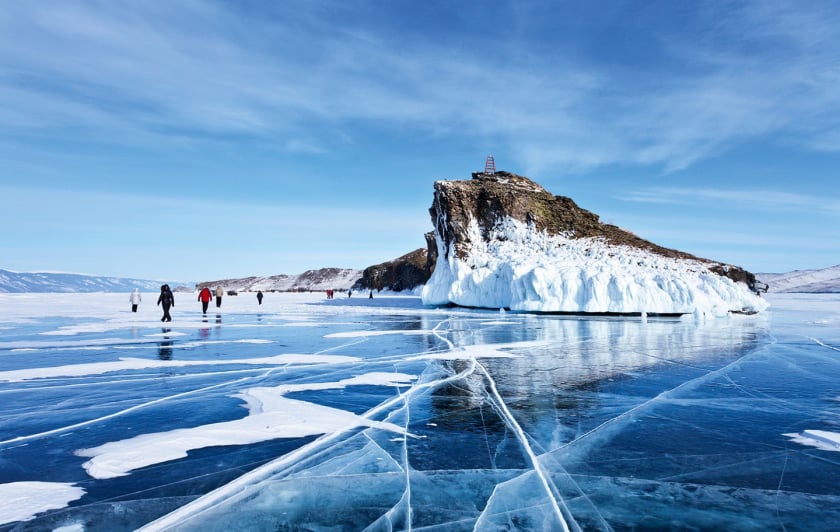
With an area of 31,722 km2, Baikal is the largest lake in the world. Photo: Shutterstock
Baikal (Russia) is the largest and deepest freshwater lake on Earth. From about January to April, the temperature drops to extremely low levels, the lake freezes, creating an incredibly spectacular sight. The lake turns into a giant transparent mirror. The ice layer on Lake Baikal is 1.5 - 2 meters thick and can withstand a weight of about 15 tons. The lake water is so clear that people can observe objects at a depth of 40 meters with the naked eye.
People who come to Baikal in winter have many ways to explore and experience such as ice skating, long walks, and overnight stays on the lake.
Soak in the Uunartoq hot springs
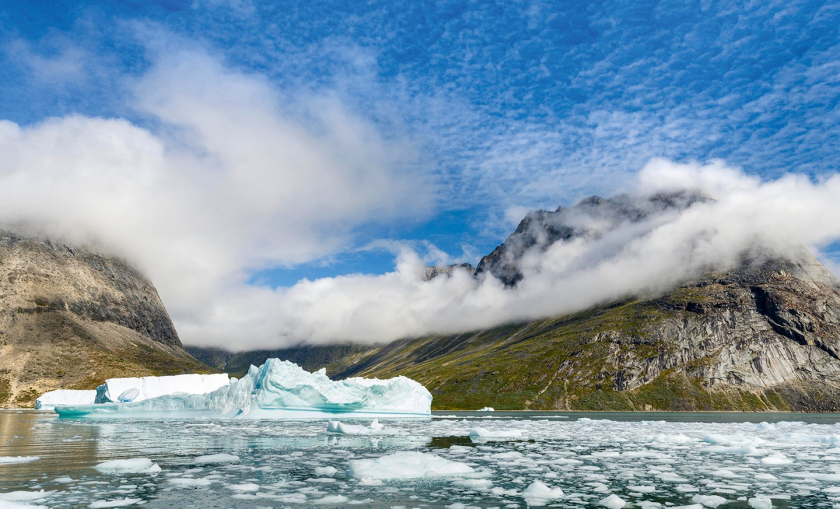
These hot springs are formed when naturally heated water bubbles to the surface. Photo: Alamy
Uunartoq Island is located in the south of Greenland, a remote, uninhabited area with no direct access. The only facility on the island is a small hut. To get to Uuniartog Island, visitors need to take a boat from Qaqortoq or Nanortalik. On the island, there is a hot spring located in the middle of a moss field facing the coast. This is the only hot spring in Greenland that is warm enough to bathe in all year round. What is special is that the water temperature is 34 - 37 degrees Celsius even in the freezing winter months. Visitors can relax in the spring with a spectacular view of the icebergs and mountain peaks surrounding the spring.
Join the ice fishing festival in Korea
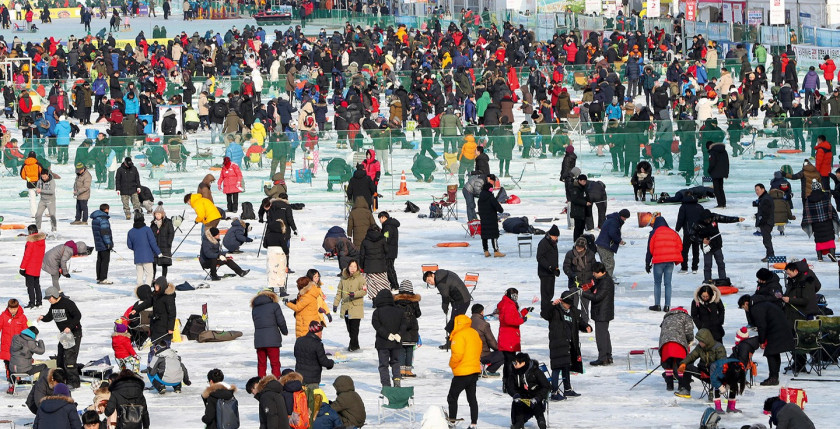
The ice is 20-30cm thick to ensure the safety of participants. Photo: Alamy
The American television station CNN once called the Hwacheon Sancheoneo Ice Fishing Festival (South Korea) one of the "Seven Wonders of Winter". Taking place in Hwacheon, a county in Gangwon Province, from January to February, the ice fishing festival is imbued with local identity. The festival attracts millions of people to drop fishing lines through holes in the ice to catch sancheoneo - a type of salmon that only lives in very clean freshwater. Visitors can also jump into the water to catch fish with their bare hands.
Go to Norway to admire the aurora borealis
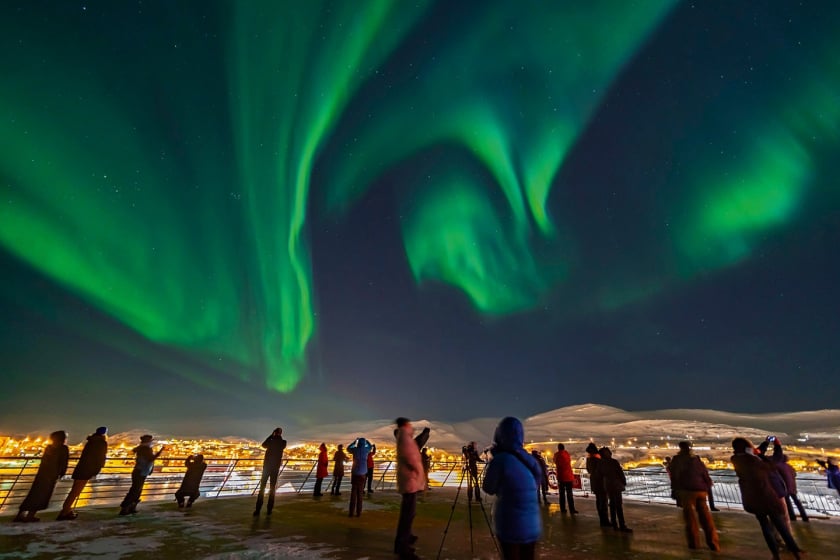
Norway is considered the best place in the world to see the aurora borealis. Photo: Alamy
Coming to the lands near the Arctic Circle, visitors will have the opportunity to admire the amazing natural phenomenon - the moving arc-shaped beams of light with many colors in the sky at night. That is the aurora borealis or also known as the Northern Lights. The famous place to see the aurora borealis is the city of Tromso, the largest urban area in Northern Norway. The time from October to April is the most suitable time. Visitors can cruise along the Norwegian coast, combine "hunting" for the aurora borealis and enjoy the magnificent scenery of the Lyngen Alps, about 350 km from the Arctic Circle.
Going to the Sami market in Lapland

Winter market in Jokkmokk. Photo: Alamy
For 400 years, in February, the Sami people of Lapland have gathered in the small town of Jokkmokk to hold a winter market. The bustling market under the falling snow, which recalls the Sami's origins as reindeer herders, has gradually developed into a three-day cultural festival. Visitors to the market often combine experiences with husky dog sled rides into the deep forest, watching the aurora borealis in the night sky. In addition, visitors should not miss the handicrafts and listen to traditional local stories.
Dancing to “drive away winter” at the Kurento Vanje festival in Slovenia

Kurent wears a long sheepskin coat, black boots and a belt with five large bells attached. Photo: Alamy
In northeastern Slovenia, every February, kurent – locals dressed in shaggy sheepskins and masks – dance through the streets. The sound of bell-ringing rings is meant to “drive away winter.” The custom marks the end of the winter months and the beginning of spring. The highlight of the festival is the Kurento Vanje – a masquerade parade, which ends with a street party featuring “homemade” cookies, mulled wine and giant doughnuts.
Skating on the world's largest natural ice rink in Canada
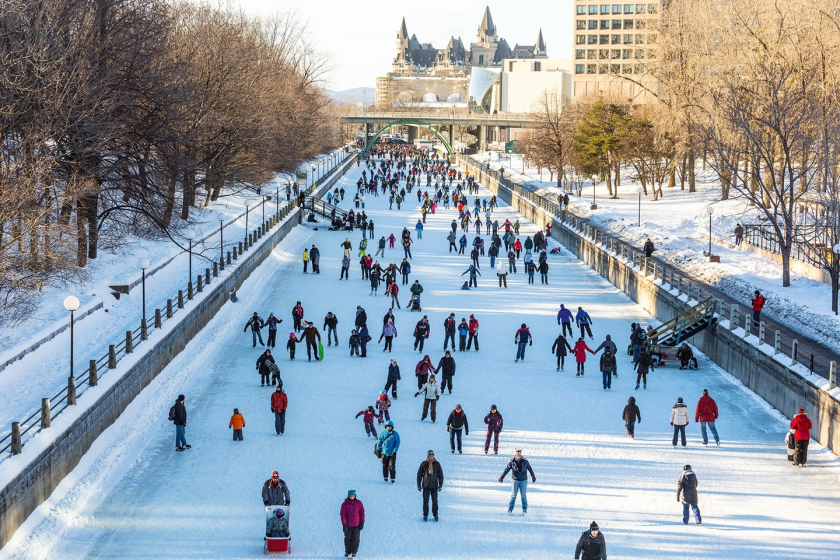
The ice rink winds around Ottawa for more than 7.8 km. Photo: Alamy
The Rideau Canal, which connects the Ottawa and Rideau Rivers and was built in the 19th century, is still in operation today and retains most of its routes and structures. Between January and March, the canal's waters freeze to form the world's longest natural ice skating trail, winding through Ottawa. Join the locals on the 7.8 km of ice for a unique tour of the city's streets from downtown to Dows Lake. If you want to get out into nature, head north to Gatineau Park or take the 200 km of ski trails that wind through the pine forests.
Take the train to see the snow in Switzerland

Bernina Express, Switzerland Photo: AWL
Switzerland has 18 train lines that run all over the country. The trains take in the majestic mountain scenery, allowing passengers to fully enjoy the country's natural gifts, especially the breathtaking views of the famous Alps. In winter, the Swiss railways pass through some of the snowiest mountain passes in Europe.
The most famous train is the Glacier Express (Zermatt-St Moritz). It is the slowest train in the world, taking 8 hours to travel between the ski paradises of Zermatt and St. Moritz.
Husky dog sledding exploring Lapland, Finland
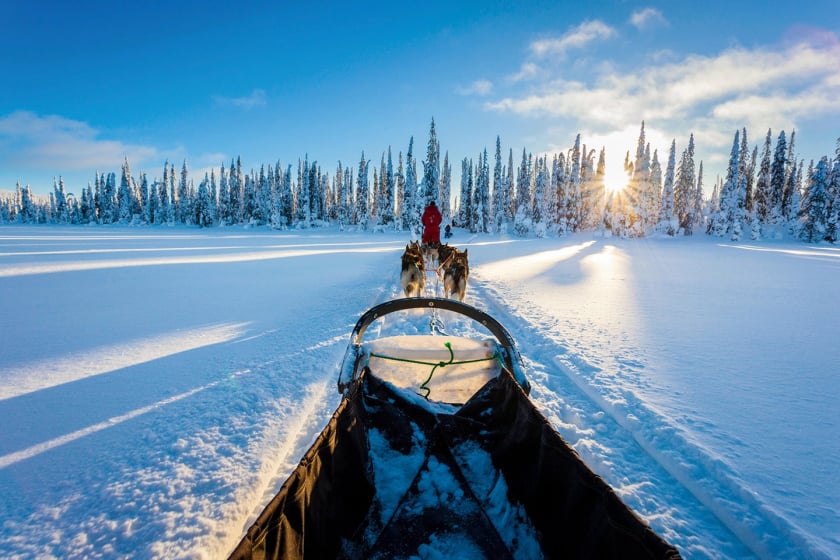
Lapland is the homeland of Santa Claus. Photo: Alamy
Dog sledding for days makes visitors realize that this is not just a means of transportation but also a way of life in Finland, the homeland of Santa Claus. Passengers will find joy in caring for and controlling dogs and crossing snow-covered forests and frozen lakes. The distance can be up to 40 km in a day. During the journey, visitors immerse themselves in the wild nature as they pass through the icy taiga, before the aurora borealis appears in the night sky.
Snowshoeing in Northern Italy
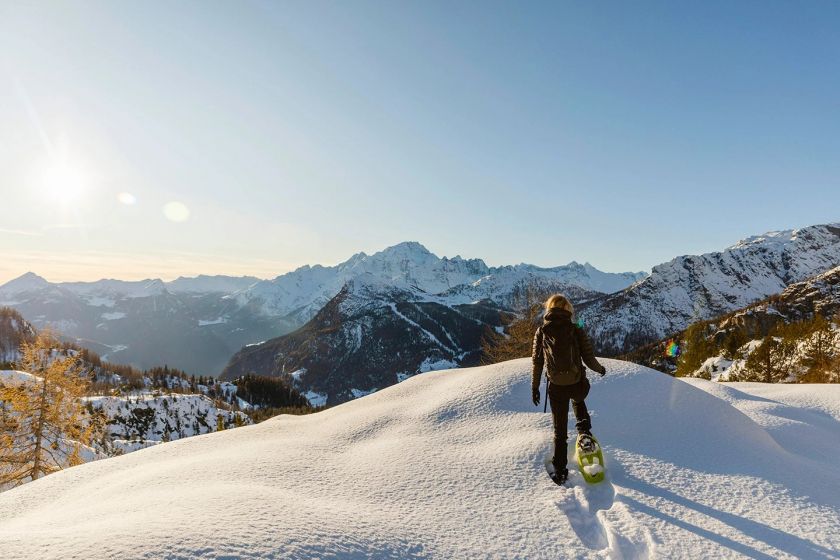
Tourists hike in the Valmalenco mountains, Italy. Photo: Alamy
In Italy's Lombardy region, snowshoeing is a fun way to spend the winter. The hikes usually take place at night, allowing participants to stargaze and enjoy food. There is also an annual event in February, when more than 4,000 people gather around Vezza D'Oglio to conquer 10km of snow at night. During the day, more challenging hikes start in the Stelvio National Park, below the 3,000m peak.
Kayaking the Lofoten Islands in winter
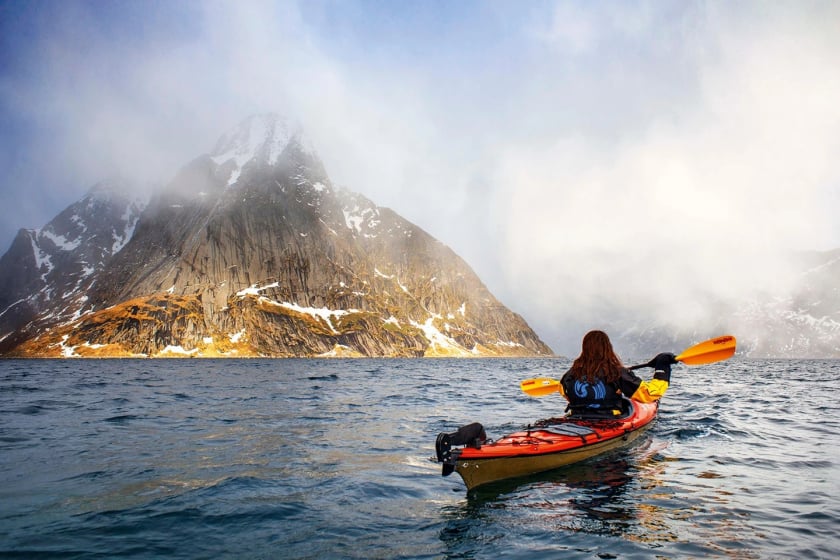
The Lofoten Islands are a dream destination for many tourists from around the world. Photo: Alamy
Lofoten is an archipelago in the Nordland district, Norway. In late winter, the whole island comes to life when schools of fish migrate to its waters. In Lofoten, there is a village known as “one of the most beautiful places in the world” with majestic mountain scenery and picturesque blue beaches. With a quiet, mirror-like river surface, the fishing village of Reine is famous for kayaking tourism. The boat trip starts from Reine and leads to the village of Arnes. While rowing, visitors slowly enjoy the peace of the village with small red wooden houses nestled on the shore.





